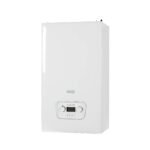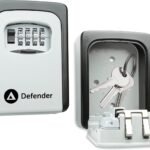As a landlord in the United Kingdom, keeping your rental properties in top condition is key. Regular upkeep ensures your tenants are happy and protects your investment. This guide offers a detailed rental property maintenance checklist uk for the UK market. It includes vital tasks that meet local laws and best practices.
Do you know if you’re meeting your legal duties as a landlord with tenancy condition reports and property inventory? This piece will guide you through the important parts of a detailed periodic inspections process. It helps keep your rental properties in excellent condition.
The Importance of Regular Property Maintenance
Keeping rental properties in the UK in good shape is key to their value and appeal. Using a detailed rental property maintenance checklist helps landlords keep their properties in top condition. This ensures they meet UK standards and offer a comfy home for tenants.
Preventative Maintenance Tasks
Tasks like servicing heating systems and spotting leaks can stop problems before they start. This approach can make your property’s parts last longer. Surveys show that 80% of landlords take proactive steps to avoid future issues.
Corrective Maintenance Tasks
It’s just as crucial to fix problems as they happen. While some 5.6% of landlords might try to fix things cheaply, it’s better to find skilled tradespeople. This ensures maintenance issues are solved right.
Cosmetic Maintenance Tasks
Improving how a rental property looks through cosmetic updates can boost its appeal and tenant happiness. 14.3% of landlords might not bother fixing things if they’re not broken. But, this could mean missing chances to make the property more attractive and draw in new tenants.
Regular property maintenance keeps rental homes safe, healthy, and valuable over time. By handling both preventative and corrective tasks, and making cosmetic updates, landlords can build a good relationship with tenants. This ensures their properties stay in great shape.
Exterior Property Maintenance Checklist
Keeping your rental property’s exterior in good shape is key. It protects the structure, boosts its look, and keeps tenants safe. This checklist covers all the important tasks for exterior upkeep.
Roof and Gutters
The roof and gutters protect against water damage. Check them often for damage or blockages. Fix any problems quickly to avoid expensive repairs and water damage.
Siding and Exterior Walls
Check the siding and walls for damage or wear. Fix any issues to keep the property looking good and safe. Make sure the siding is secure and walls are sealed to stop water damage.
Walkways and Paths
Clear walkways and paths of debris and hazards. Check for uneven surfaces or cracks. Fixing these keeps the outside safe and easy to get around.
Landscaping and Yard Maintenance
Good landscaping makes the property look better and keeps it safe. Keep the lawn cut, trim plants, and remove dead ones. Make sure the drainage works right to avoid flooding.

Following this checklist keeps your rental property in top shape. It ensures a safe and welcoming place for tenants and protects your investment.
Interior Property Maintenance Checklist
Keeping the inside of your rental property in good shape is just as crucial. This means looking after the heating and plumbing, checking electrical systems and appliances, and fixing any interior damage or decorating needs. This keeps the property looking great.
Heating and Plumbing Systems
It’s vital to check and maintain the heating and plumbing systems often. This stops them from breaking down and saves you money. Make sure to look at boilers, radiators, pipes, and taps regularly. Fix any problems quickly.
Electrical Systems and Appliances
Checking the electrical systems and appliances in your rental property is key. It makes sure they work right and are safe. Test sockets, switches, and lights, and check big appliances like ovens and fridges too.
Interior Repairs and Decorating
Fixing any interior damage and keeping the decor fresh can make your rental more attractive. This might mean fixing walls, replacing flooring, or updating old fixtures. It keeps the property looking good for new tenants.
| Maintenance Task | Frequency |
|---|---|
| Boiler service | Annually |
| Radiator bleeding | Bi-annually |
| Plumbing inspections | Quarterly |
| Electrical safety checks | Annually |
| Appliance maintenance | As needed |
| Interior repaints | Every 3-5 years |
| Flooring replacements | Every 5-7 years |
Looking after the inside of your rental property keeps it in top shape. It also makes sure it’s safe and comfortable for your tenants. Regular checks and maintenance can save you money by avoiding big repairs. It also helps keep your property’s value high.

Rental property maintenance checklist UK
As a landlord in the UK, keeping your rental property in good shape is key. It helps you meet legal rules and keeps your investment’s value high. This checklist covers all the important tasks to keep your property top-notch.
Legal Obligations:
- Get a valid gas safety certificate every year to make sure your gas appliances are safe.
- Do regular checks on electrical installations to spot and fix any electrical dangers.
- Give your tenants the latest energy performance certificate (EPC) to show how energy-efficient the property is.
- Make sure smoke detectors and carbon monoxide alarms are checked every six months and replaced every five to seven years.
- Use a deposit protection scheme for your tenants’ deposits.
Preventative Maintenance:
- Look over the property’s outside parts like the roof, gutters, and outdoor structures to spot and fix problems early.
- Have the heating and cooling systems checked every year to stop breakdowns and keep them running well.
- Check for and fix any water leaks in pipes, faucets, or plumbing to stop water damage.
- Clean gutters and downspouts twice a year to stop blockages that could damage the property.
Cosmetic Maintenance:
- Give the property a fresh coat of paint or update decorations to keep it looking modern and inviting.
- Replace old or damaged flooring, countertops, or finishes to keep the property looking great.
- Make sure all doors, windows, and cabinets work well and are kept in good condition.
Using this checklist helps you meet your legal duties as a landlord. It also protects your investment and makes sure your tenants have a safe and comfy place to live.
| Maintenance Task | Frequency | Benefits |
|---|---|---|
| Gas safety certificate | Annual | Ensures gas appliances are safe and functioning correctly |
| Electrical installation checks | Regular | Identifies and addresses potential electrical hazards |
| Energy performance certificate (EPC) | Required for all rental properties | Provides information on the property’s energy efficiency |
| Smoke detector and carbon monoxide alarm maintenance | Test every 6 months, replace every 5-7 years | Ensures the safety of your tenants |
| Tenant deposit protection | Required by law | Safeguards your tenants’ deposits |
Tenant Communication and Property Inspections
Keeping in touch with tenants and checking the property often are key to a good rental maintenance plan. By asking tenants to report problems quickly and doing inspections early, landlords can fix issues fast. This keeps the property in great shape during the tenancy.
Experts suggest doing property inspections every three, four, or six months. This helps tackle maintenance and safety issues on time. It’s good to do initial and final checks, and regular ones every three months. This approach helps avoid problems and keeps the landlord-tenant relationship strong.
It’s standard to give tenants at least 24 hours’ notice before inspections. This respects their privacy and comfort. But, landlords can enter without notice in emergencies like fire, gas leaks, or crime to keep everyone safe.
During inspections, landlords should check the property’s condition, make sure it meets legal standards, and look for repairs or replacements. They should also check on tenant well-being. This means testing alarms, looking for pests, and making sure safety rules are followed.
By talking well with tenants and doing regular checks, landlords can tackle problems early. This meets their legal duties to keep the rental safe and well-kept. It also builds a good landlord-tenant relationship, leading to a successful tenancy.
Emergency Preparedness and Pest Control
As a responsible landlord, being ready for emergencies is key. This means giving tenants emergency contact info, keeping a list of trusted contractors, and fighting pests to stop infestations and damage.
Emergency Preparedness
Rental properties can have many emergency issues, like broken water lines or electrical problems. Landlords need to be easy to reach and have reliable vendors ready 24/7 for repairs. Talking well with tenants is important to keep them safe and reduce damage.
Landlords should get ready for emergencies by making detailed plans, giving tenants important contact info, and using answering services for emergencies.
Pest Control
Pests like rats or bed bugs can badly damage properties if not dealt with. Landlords should stop pests before they start by checking regularly, sealing up entry points, and fixing things that might attract pests.
If pests do show up, landlords must fix the problem fast to protect the property and keep tenants safe. It’s key to work with trusted pest control services and tell tenants what you’re doing to fix the issue.
| Pest | Common Causes | Potential Damage |
|---|---|---|
| Rats and Mice | Neglect, unclean environment, poor property maintenance | Structural damage, contamination of food sources |
| Wasps and Bees | Nests forming without tenant interference | Stings, property damage |
| Bed Bugs | Introduced by tenants, prior tenant neglect | Bites, difficulty sleeping, property contamination |
| Fleas | Pets kept on the premises against policy | Bites, infestation spreading to subsequent tenants |
| Silverfish | High humidity, poor ventilation, water leaks | Damage to books, documents, and other paper materials |
| Nesting Birds and Squirrels | Lofts and other accessible spaces | Structural damage, contamination |
By acting early on emergencies and pests, landlords can keep tenants safe and protect their properties.
Conclusion
Following a detailed rental property maintenance checklist can help UK landlords save money and keep tenants happy. It ensures their investment stays in top shape, meeting local standards. Key to success is regular upkeep, good communication, and being proactive in managing the property.
It’s vital to have clear lease agreements, schedule regular checks, and set payment times. This protects landlords’ rights and keeps cash flow steady. Following the law and health and safety rules is crucial to avoid legal issues and fines. Having the right insurance also protects against unexpected damage or claims.
Putting maintenance first, with regular checks and talking openly with tenants, boosts property value. It cuts down on maintenance costs and makes the place more inviting for tenants. This approach leads to happier tenants, higher occupancy rates, and a more profitable investment over time.




